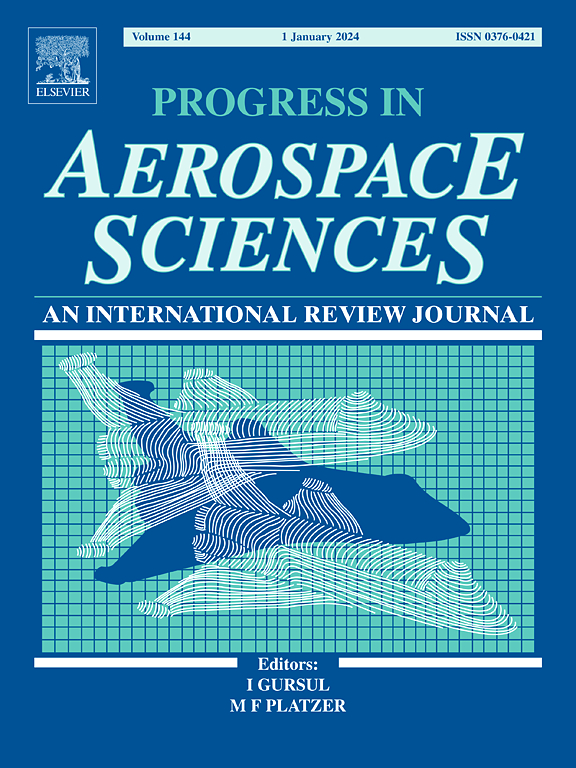Graphene-enhanced epoxy composites: A comprehensive review of dispersion mechanisms, processing strategies, property optimization, characterization and sustainable innovations
IF 16.2
1区 工程技术
Q1 ENGINEERING, AEROSPACE
引用次数: 0
Abstract
Graphene has emerged as one of the most promising materials for enhancing the properties of polymer composites, particularly epoxy resins. In order to attain the greatest benefits of graphene nanoparticles in the production of composite matrix systems for industrial applications, it is crucial to know which aspects can influence the final material qualities. Among these, nanoparticle dispersion plays a crucial role in the mechanical properties of polymer nanocomposites. The dispersion of graphene nanofillers is not a straightforward process since they tend to agglomerate due to van der Waals interactions. To promote de-agglomeration, various dispersion technologies are available. A survey of the literature regarding dispersion strategies and the accompanying mechanisms constitutes the core of the present review. Starting with a basic overview of difficulties associated with charging matrix materials with graphene and a short description of the properties of graphene, the review focuses on mechanisms governing graphene dispersion in epoxy. Furthermore, the physical and chemical techniques promoting effective dispersion are examined. Possible approaches for integrating dispersive technologies and adjusting dispersion quality are also discussed. Finally, the relationship between dispersion quality and the properties of graphene-epoxy composites and the characterization methods used to evaluate the quality of dispersion are critically analyzed. This comprehensive review highlights the advances, challenges, and future directions in achieving optimal dispersion of graphene in epoxy composites, emphasizing its significance for the development of high-performance materials.
石墨烯增强环氧复合材料:分散机制、加工策略、性能优化、表征和可持续创新的综合综述
石墨烯已成为增强聚合物复合材料,特别是环氧树脂性能的最有前途的材料之一。为了使石墨烯纳米颗粒在工业应用的复合基质系统中发挥最大的效益,了解哪些方面会影响最终的材料质量是至关重要的。其中,纳米颗粒的分散对聚合物纳米复合材料的力学性能起着至关重要的作用。石墨烯纳米填料的分散不是一个简单的过程,因为它们往往由于范德华相互作用而聚集。为了促进脱团聚,有多种分散技术可供选择。关于分散策略和相关机制的文献综述构成了本综述的核心。本文首先概述了用石墨烯给基体材料充电的困难,并简要介绍了石墨烯的性质,然后重点介绍了石墨烯在环氧树脂中的分散机制。此外,还探讨了促进有效分散的物理和化学技术。讨论了整合色散技术和调整色散质量的可能途径。最后,分析了分散体质量与石墨烯-环氧复合材料性能之间的关系,以及评价分散体质量的表征方法。本文综述了石墨烯在环氧复合材料中实现最佳分散的进展、挑战和未来方向,强调了其对高性能材料发展的重要意义。
本文章由计算机程序翻译,如有差异,请以英文原文为准。
求助全文
约1分钟内获得全文
求助全文
来源期刊

Progress in Aerospace Sciences
工程技术-工程:宇航
CiteScore
20.20
自引率
3.10%
发文量
41
审稿时长
5 months
期刊介绍:
"Progress in Aerospace Sciences" is a prestigious international review journal focusing on research in aerospace sciences and its applications in research organizations, industry, and universities. The journal aims to appeal to a wide range of readers and provide valuable information.
The primary content of the journal consists of specially commissioned review articles. These articles serve to collate the latest advancements in the expansive field of aerospace sciences. Unlike other journals, there are no restrictions on the length of papers. Authors are encouraged to furnish specialist readers with a clear and concise summary of recent work, while also providing enough detail for general aerospace readers to stay updated on developments in fields beyond their own expertise.
 求助内容:
求助内容: 应助结果提醒方式:
应助结果提醒方式:


